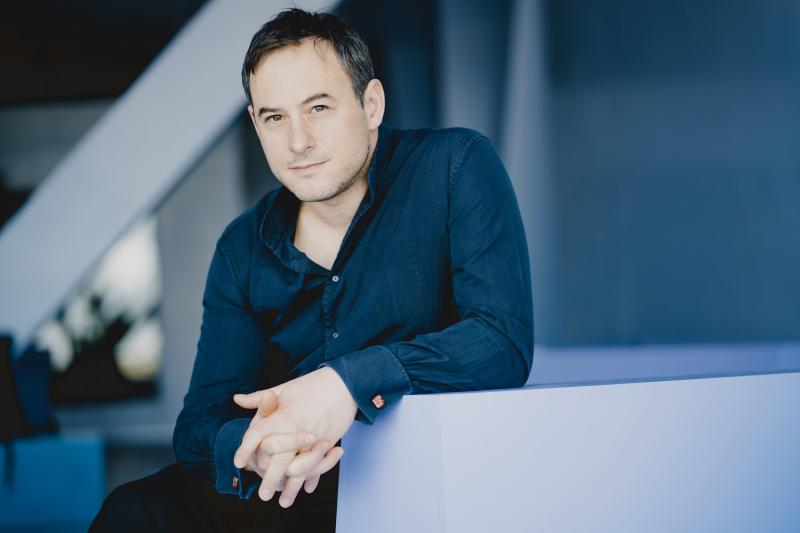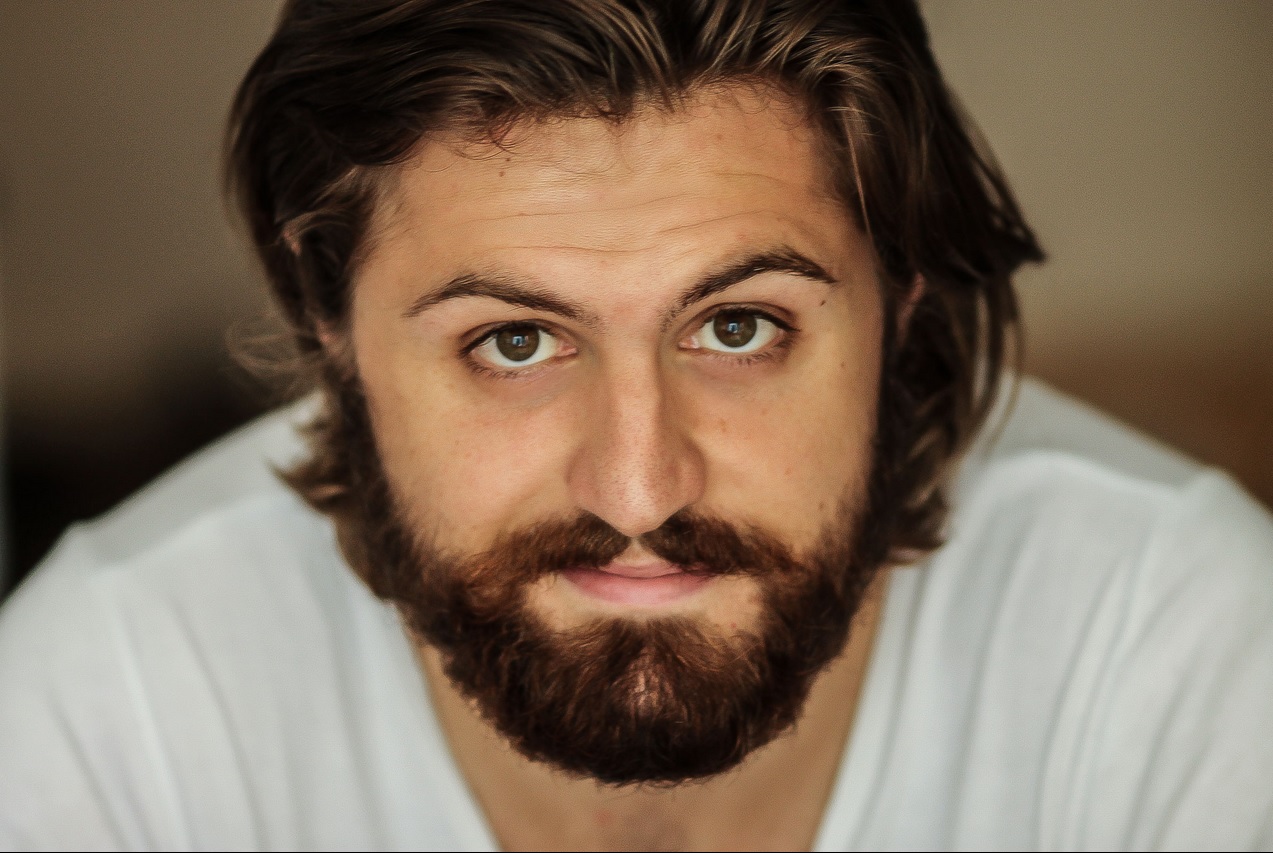Brockes-Passion, Arcangelo, Cohen, Wigmore Hall review – hybrid Handel | reviews, news & interviews
Brockes-Passion, Arcangelo, Cohen, Wigmore Hall review – hybrid Handel
Brockes-Passion, Arcangelo, Cohen, Wigmore Hall review – hybrid Handel
An original alternative to Bach loses impact in small-scale performance

Handel’s Brockes-Passion is a curious piece - sacred but not liturgical, and with a strong influence from opera, though it is a concert work. Solo voices predominate, and the singers assembled at Wigmore Hall were mostly fine.
Several composers tackled the passion libretto by Berthold Heinrich Brockes around the turn of the 18th century, and, apart from Handel himself, they were all associated with Hamburg–Fasch and Telemann the other two big names. The libretto draws freely from the gospels, but was not intended for liturgical use, allowing composers some stylistic license, especially in the direction of opera. Handel had worked in Hamburg, but at the time of his Brockes Passion, around 1715, he was already in London, and the reason for his composing the setting remains a mystery, although a commission from Hamburg seems likely. The result is a work that sits squarely between the Italianate liturgical music of his younger years and the opera of his maturity. The vocal style is usually staid, though there are occasional flourishes, while the accompaniment is often ornate, with busy bass lines and elaborate obbligatos.
Arcangelo is a small orchestra, just one to part in the strings, here complemented with pairs of oboes and bassoons, a chamber organ and lute for continuo, and Cohen himself at the harpsichord. The imposing block chords that begin the Overture suggest that Handel had a larger ensemble in mind. The chorus of eight also seemed meagre, although there are very few choral numbers, just occasional chorales. In fact, it is more a chorus of soloists, as each singer is called on to cameo as a minor character in the story: Marcus Farnsworth’s Pilate and Matthew Long’s Peter were particularly impressive. Among the soloists proper, the finest performance was from Konstantin Krimmel as Jesus (pictured above by Maren Urlich). His has a rich but modestly scaled baritone, ideal for Baroque repertoire, and with enough variety of expression to bring Handel’s underplayed characterisation to life. He even looks the part! Stuart Jackson, as the Evangelist, also has an ideal Baroque sound, expressive and impassioned, but always within the strict stylistic bounds of the era. Unfortunately, Brockes writes out Jesus after the meeting with Pilate—a great shame given Krimmel’s performance in the first half—and the crucifixion is mostly narrated by the Evangelist. Jackson paced his expression beautifully, remaining a neutral observer for the earlier scenes, and then gradually increasing the emotion towards the end. Sandrine Piau took the role of “Daughter of Zion”, an allegorical figure offering pious reflections on the action. She is a reliable Baroque singer, and she clearly had the measure of this role, although her voice often sounded brittle and strained.
Among the soloists proper, the finest performance was from Konstantin Krimmel as Jesus (pictured above by Maren Urlich). His has a rich but modestly scaled baritone, ideal for Baroque repertoire, and with enough variety of expression to bring Handel’s underplayed characterisation to life. He even looks the part! Stuart Jackson, as the Evangelist, also has an ideal Baroque sound, expressive and impassioned, but always within the strict stylistic bounds of the era. Unfortunately, Brockes writes out Jesus after the meeting with Pilate—a great shame given Krimmel’s performance in the first half—and the crucifixion is mostly narrated by the Evangelist. Jackson paced his expression beautifully, remaining a neutral observer for the earlier scenes, and then gradually increasing the emotion towards the end. Sandrine Piau took the role of “Daughter of Zion”, an allegorical figure offering pious reflections on the action. She is a reliable Baroque singer, and she clearly had the measure of this role, although her voice often sounded brittle and strained.
That was a shame, because the defining virtue of Arcangelo is their relaxed sound and warm, involving textures. Cohen takes a strict approach to straight tone, and to instrumentation with his small ensemble, but nothing about the performance style ever feels severe. Tempos are not overly driven, and the singers are given the space to breathe and to shape their phrases. The imaginative lute accompaniment from Thomas Dunford gently warmed the continuo texture, and he worked particularly well with Piau. In some of the more anguished arias, Handel includes driving dotted-rhythm accompaniments, and here Cohen increases both the tempo and the weight of the accents, to impressive effect.
But this was mostly small-scale Handel, and given the already modest dramatic scope of the work, reducing the ensemble focussed attention on the soloists. Stuart Jackson shone, as did Konstantin Krimmel, but both deserved more interesting material to work with.
- This concert will be broadcast on BBC Radio 3 on Thursday 10 October
- More classical reviews on theartsdesk
rating
Explore topics
Share this article
The future of Arts Journalism
You can stop theartsdesk.com closing!
We urgently need financing to survive. Our fundraising drive has thus far raised £49,000 but we need to reach £100,000 or we will be forced to close. Please contribute here: https://gofund.me/c3f6033d
And if you can forward this information to anyone who might assist, we’d be grateful.

Subscribe to theartsdesk.com
Thank you for continuing to read our work on theartsdesk.com. For unlimited access to every article in its entirety, including our archive of more than 15,000 pieces, we're asking for £5 per month or £40 per year. We feel it's a very good deal, and hope you do too.
To take a subscription now simply click here.
And if you're looking for that extra gift for a friend or family member, why not treat them to a theartsdesk.com gift subscription?
more Classical music
 Helleur-Simcock, Hallé, Wong, Bridgewater Hall, Manchester review - moving lyricism in Elgar’s concerto
Season opener brings lyrical beauty, crisp confidence and a proper Romantic wallow
Helleur-Simcock, Hallé, Wong, Bridgewater Hall, Manchester review - moving lyricism in Elgar’s concerto
Season opener brings lyrical beauty, crisp confidence and a proper Romantic wallow
 Kohout, Spence, Braun, Manchester Camerata, Huth, RNCM, Manchester review - joy, insight, imagination and unanimity
Celebration of the past with stars of the future at the Royal Northern College
Kohout, Spence, Braun, Manchester Camerata, Huth, RNCM, Manchester review - joy, insight, imagination and unanimity
Celebration of the past with stars of the future at the Royal Northern College
 Jansen, LSO, Pappano, Barbican review - profound and bracing emotional workouts
Great soloist, conductor and orchestra take Britten and Shostakovich to the edge
Jansen, LSO, Pappano, Barbican review - profound and bracing emotional workouts
Great soloist, conductor and orchestra take Britten and Shostakovich to the edge
 Jakub Hrůša and Friends in Concert, Royal Opera review - fleshcreep in two uneven halves
Bartók kept short, and a sprawling Dvořák choral ballad done as well as it could be
Jakub Hrůša and Friends in Concert, Royal Opera review - fleshcreep in two uneven halves
Bartók kept short, and a sprawling Dvořák choral ballad done as well as it could be
 Hadelich, BBC Philharmonic, Storgårds, Bridgewater Hall, Manchester review - youth, fate and pain
Prokofiev in the hands of a fine violinist has surely never sounded better
Hadelich, BBC Philharmonic, Storgårds, Bridgewater Hall, Manchester review - youth, fate and pain
Prokofiev in the hands of a fine violinist has surely never sounded better
 Monteverdi Choir, ORR, Heras-Casado, St Martin-in-the-Fields review - flames of joy and sorrow
First-rate soloists, choir and orchestra unite in a blazing Mozart Requiem
Monteverdi Choir, ORR, Heras-Casado, St Martin-in-the-Fields review - flames of joy and sorrow
First-rate soloists, choir and orchestra unite in a blazing Mozart Requiem
 Cho, LSO, Pappano, Barbican review - finely-focused stormy weather
Chameleonic Seong-Jin Cho is a match for the fine-tuning of the LSO’s Chief Conductor
Cho, LSO, Pappano, Barbican review - finely-focused stormy weather
Chameleonic Seong-Jin Cho is a match for the fine-tuning of the LSO’s Chief Conductor
 Classical CDs: Shrouds, silhouettes and superstition
Cello concertos, choral collections and a stunning tribute to a contemporary giant
Classical CDs: Shrouds, silhouettes and superstition
Cello concertos, choral collections and a stunning tribute to a contemporary giant
 Appl, Levickis, Wigmore Hall review - fun to the fore in cabaret and show songs
A relaxed evening of light-hearted fare, with the accordion offering unusual colours
Appl, Levickis, Wigmore Hall review - fun to the fore in cabaret and show songs
A relaxed evening of light-hearted fare, with the accordion offering unusual colours
 Lammermuir Festival 2025, Part 2 review - from the soaringly sublime to the zoologically ridiculous
Bigger than ever, and the quality remains astonishingly high
Lammermuir Festival 2025, Part 2 review - from the soaringly sublime to the zoologically ridiculous
Bigger than ever, and the quality remains astonishingly high
 BBC Proms: Ehnes, Sinfonia of London, Wilson review - aspects of love
Sensuous Ravel, and bittersweet Bernstein, on an amorous evening
BBC Proms: Ehnes, Sinfonia of London, Wilson review - aspects of love
Sensuous Ravel, and bittersweet Bernstein, on an amorous evening
 Presteigne Festival 2025 review - new music is centre stage in the Welsh Marches
Music by 30 living composers, with Eleanor Alberga topping the bill
Presteigne Festival 2025 review - new music is centre stage in the Welsh Marches
Music by 30 living composers, with Eleanor Alberga topping the bill

Add comment